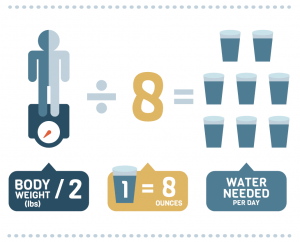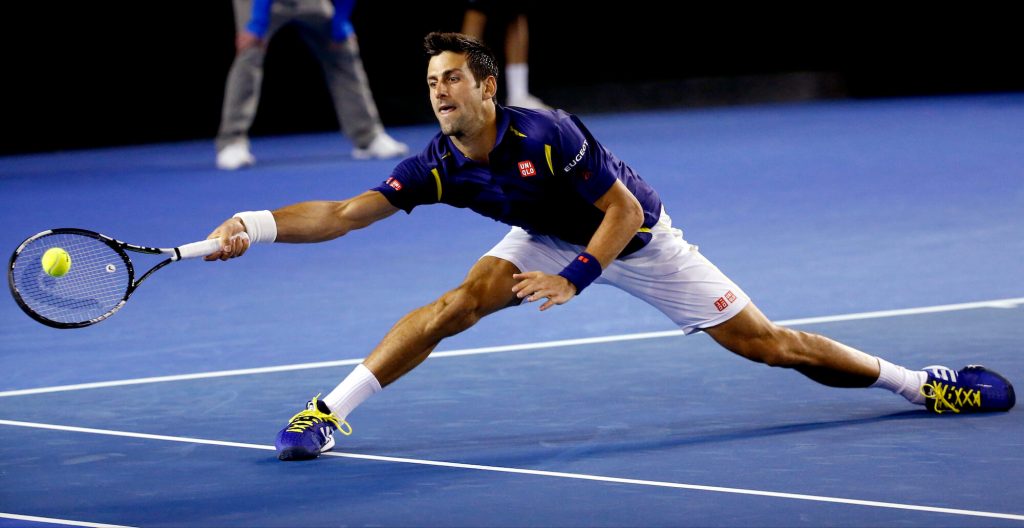Staying Healthy On & Off The Court Part I
In order to maintain strength, stamina, and longevity as a tennis player it’s essential that you maintain a healthy regimen both on and off the court.
We’re not just talking about a healthy diet and an efficient workout routine here, we’ll be talking about how to take care of your health both physically and mentally. This is the first part of our healthy tennis lifestyle series, read Part Two for more tips on how you can perform to your fullest potential for a long and healthy tennis career!
DIET
First is diet. Considering the saying – “we are what we eat”, diet is extremely important for all athletes. Your match performance depends on your nutrition. What should you eat and drink on the day of a match? Although every player is different, here are a few staple dieting tips that are sure keep any tennis player light on their feet.
Water

- Never start a match already dehydrated. Any deficit on water can cause cardiovascular strain, decrease your strength and endurance. Drink plenty of decaffeinated fluids (at least 80 oz. a day) the days leading up to a match and the day of. Try sticking to water and sports drinks since juices have excess amounts of sugar. A good rule of thumb is: if you wait till you’re thirsty to drink water, you’re doing it wrong.
- P.S. Don’t forget to rehydrate after a match!
Electrolytes
- When playing tennis in a hot environment or when sweating profusely it is very important to keep your sodium levels balanced. The most common injury on the court is cramping. In order to maintain hydration a player must replace the sodium and chloride electrolytes lost through sweat. Water is not the cure in this case, because drinking water does not contain much sodium. If your sodium levels are low it could lead to hyponatremia, or low-sodium leading to fatigue and nausea
- Foods with a good source of sodium include: salt (¼ a teaspoon contains 590 mg of sodium), tomato juice, salted sports drinks, and salted pretzels.
Carbohydrates

- During play and practice a tennis player should consume 30-40 grams of carbohydrates every hour. During intense training however, 3-5 grams per pound of bodyweight each day is recommended. Carbohydrates are extremely crucial to your performance on the court. Even if you eat a nutritious and high-carb meal before a match, after 60-90 minutes your muscles will start to demand energy intake and your body will start to feel fatigued
- Foods with healthy amounts of carbohydrates include: breads, cereals, rice, pasta, fruits, vegetables. These healthy fundamentals should be a regular part of a tennis player’s diet. Foods with high a glycemic index that quickly boost blood sugar levels including plain bagels, cereal bars, crackers, and honey are also recommended.
HYGIENE
Tip 1: Always change out of damp clothes immediately after a practice or a match to avoid irritated skin.
Tip 2: Clean your clothes after each wear to avoid bacteria build up.
Tip 3: Shower often. This is necessary before any treatment by a sports medicine therapist in order to prevent the spread of illness and infections. Remember to bring an extra towel when traveling for matches and tournaments.
Tip 4: Wash your hands often. A healthy immune system is any tennis player’s best friend. It’s arguably the most important aspect of your health when it comes to your strength as a player. Help prevent the spread of sickness by washing your hands well, and often.
PREVENTING BLISTERS

Walking with blisters is uncomfortable. Playing tennis with blisters is agonizing. Here are a few tips for preventing tennis blisters.
Tip 1: Make sure your feet are dry before putting socks on.
Tip 2: Use foot powder between toes to decrease moisture in the skin.
Tip 3: Wearing two pairs of socks helps. Try wearing the first pair inside out and the second pair rightside out to avoid blisters. Change them frequently to avoid moisture build up.
Tip 4: Make sure your shoes fit perfectly. They should fit to your foot, not the other way around.
Tip 5: If you still notice blisters building up try rubbing vaseline on the outside of your inner sock to avoid friction. Research lacing techniques that help prevent the sliding in your shoes.











Comments: 0